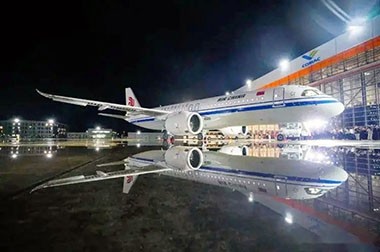What is the difference between 7075-T6 and 7075 T73?
The differences between 7075-T6 and 7075-T73 aluminum alloys primarily stem from their heat treatment processes, which result in varying mechanical properties, corrosion resistance, and suitability for specific applications.
7075 aluminum is a high-strength alloy primarily used in aerospace and other demanding applications, and its tempering grades (T6 or T73) describe the material's heat treatment process.
7075-T6 vs 7075 T73
| Aspect | 7075-T6 | 7075-T73 |
| Strength | Higher (peak-aged) | Lower (overaged) |
| Corrosion Resistance | Moderate | Excellent |
| Stress Cracking | Prone | Resistant |
| Typical Use Cases | High-stress, low-corrosion parts | Aerospace/marine critical parts |
7075-T6 vs 7075 T73 Heat Treatment Process
| Condition | Treatment Process | Strength | Stress Corrosion Cracking (SCC) Resistance | Dimensional Stability | Other Properties |
| 7075-T6 | Solution heat treated and then artificially aged (peak aging) | Achieves maximum strength | More prone to stress corrosion cracking | Fair | Retains high strength but is more susceptible to stress corrosion |
| 7075-T73 | Solution heat treated and then over-aged (additional aging beyond peak strength) | Slightly lower than T6 | Improved stress corrosion cracking resistance | Improved dimensional stability | Strength slightly reduced but improved stress corrosion resistance and dimensional stability |
In the T6 temper, the alloy undergoes solution heat treatment followed by artificial aging. This process precipitates strengthening phases, thereby maximizing the alloy's tensile strength. The resulting material is very strong and hard, making it ideal for structural components that require maximum strength.
In the T73 temper, the alloy undergoes additional over-aging treatment. This extra aging step reduces residual stresses and alters the distribution of precipitates. While this heat treatment slightly reduces the ultimate strength compared to T6, it improves the material's resistance to stress corrosion cracking and general corrosion.
7075-T6 vs 7075 T73 Mechanical Properties
Strength:
- T6: Has higher tensile strength, which is a key factor for many aerospace and high-performance applications.
- T73: Due to the over-aging process, tensile strength is slightly lower, but this trade-off is acceptable when increased durability in corrosive environments is needed.
Ductility and Toughness:
- T6: Slightly worse ductility, more prone to cracking due to stress concentrations under certain conditions.
- T73: Has better fracture toughness and improved ductility, making it more resistant to crack propagation under stress.
7075-T6 vs 7075 T73 Corrosion Resistance
| Condition | Corrosion Resistance | Stress Corrosion Cracking (SCC) Resistance | Suitable Environment |
| 7075-T6 | Susceptible to corrosion due to residual stresses from peak aging | Prone to stress corrosion cracking (SCC) due to residual stresses | Best suited for non-corrosive or controlled environments (e.g., indoor machinery) |
| 7075-T73 | Over-aging reduces internal stresses and improves corrosion resistance | Provides excellent stress corrosion cracking resistance, suitable for harsh environments | Suitable for exposure to harsh environments (e.g., marine, aerospace, low temperature) |
7075-T6 Corrosion Resistance
Although it has high strength, the T6 condition is more prone to stress corrosion cracking and general corrosion. This can be a limiting factor when the alloy is exposed to moist or corrosive chemical environments.
7075-T73 Corrosion Resistance
The over-aging process in T73 is specifically designed to enhance corrosion resistance. The improved stress corrosion cracking resistance makes T73 the best choice for environments with more severe corrosion, even at the expense of some strength.
7075-T6 vs 7075 T73 Typical Applications
| Condition | Application Field | Suitable Parts |
| 7075-T6 | High-strength parts where corrosion is not a primary concern | Aircraft structural components (bulkheads, fittings) |
| Automotive racing parts, climbing equipment, firearm receivers | ||
| 7075-T73 | Critical parts requiring durability in corrosive or cyclic stress environments | Aircraft wing bases, landing gear, marine hardware |
| Low-temperature systems (better performance at low temperatures) |
7075 T6 Applications
- Aerospace structural components
- High-performance sports equipment (e.g., bicycle frames)
- Military and defense hardware where high strength is a primary consideration
7075 T73 Applications
- Components exposed to marine environments or high humidity and corrosive conditions
- Components requiring a balance between strength and long-term durability
- Applications where stress corrosion cracking (SCC) must be considered, such as certain transportation and industrial uses
7075-T6 is optimized for maximum strength through solution heat treatment and artificial aging, but is more susceptible to corrosion.
7075-T73 sacrifices some strength to enhance stress corrosion cracking resistance and overall corrosion resistance, making it more suitable for harsh or corrosive environments.
7075-T6 and 7075 T73 Selection Criteria
- Strength and durability: T6 has about 10% higher strength, but is more prone to SCC.
- Environmental factors: T73 is better suited for saltwater, humid, or high-stress cyclic environments.
- Cost: T73 may involve more complex processing, but its lifespan in harsh conditions often justifies the cost.
When selecting the appropriate temper for a specific application, the trade-off between strength and corrosion resistance is crucial. T6 is typically chosen for high strength and low corrosion risk environments, while T73 is preferred when durability in corrosive environments is paramount.




